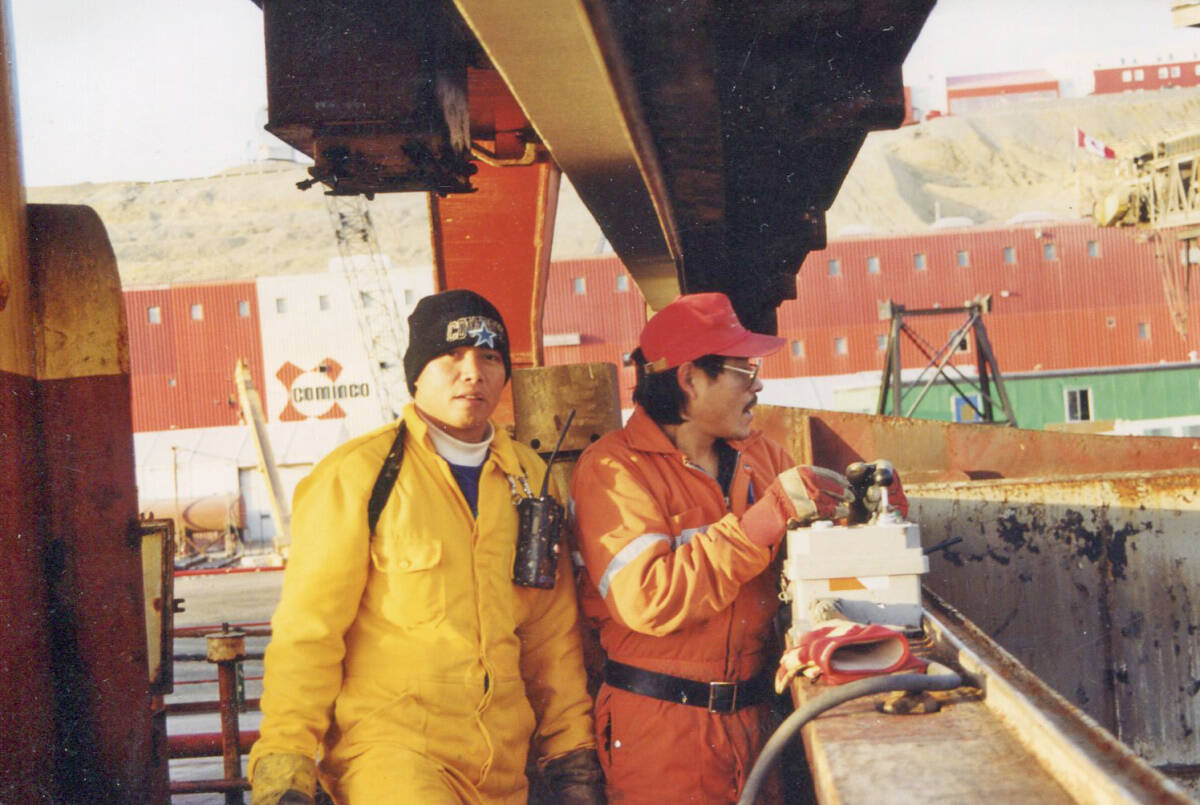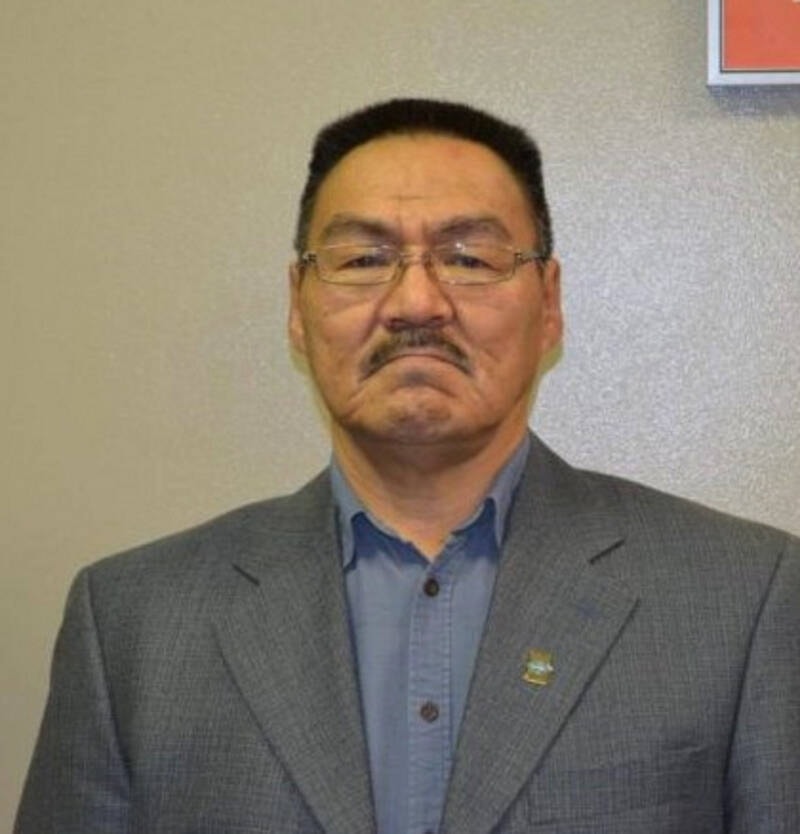Ted Tsetta spent close to 30 years working at various Northern mines.
He was employed by Subarctic Welding when he heard from a recruiter at the Polaris zinc mine on Little Cornwallis Island, approximately 100 kilometres north of Resolute Bay, in what is now Nunavut (it was still the Northwest Territories at the time).
“I got a call and I said, ‘Sure, I’ll go,’ I’m not going to hesitate in the mining industry,” Tsetta says. “I took that chance right off the bat.”
He remembers his first day of work as a labourer at Polaris was Oct. 5, 1981. He was 19 and pulling in more than $3,000 every two weeks.
“I got so interested because I grew up in the mines,” Tsetta recalls, referring to the Discovery gold mine, about 85 km northeast of Yellowknife, in an area where his father used to hunt, fish and trap.
In the early 1980s, Tsetta embarked on a mining career with little related training but plenty of ambition. These days, employees require a wealth of safety certifications.
“Back then you were just given a shovel and ‘Here you go. Go dig,’” he says, laughing.
Several years later, he moved over to Con Mine, where he toiled in the assay lab and helped pour gold.
“I was home every day at 4 o’clock,” he says of the site’s close proximity to Yellowknife.
From there, he went to Treminco Resources’ Ptarmigan underground gold mine.
But then his voice grows sombre as he tells of an accident that took the life of a co-worker. A pump caught fire 137 metres below the surface and the carbon monoxide overwhelmed the miner.
“We lost a good friend of ours,” he recalls. “It was never the same after that.”
Tsetta then ventured back up to the High Arctic, taking a job at the Nanisivik lead-zinc mine near Arctic Bay from 1991 to ‘95. He drove a truck and worked as an underground blaster. While at Nanisivik, he attained rescue certification.
“Working at different mines, you get to know underground, surface and the whole operation of the mining industry,” he says. “The best part of mining back then was hands-on experience. You could do your practical (testing) after that because once you know what you’re doing underground or surface, writing your exam is easy, it’s just so easy.”
In 1996, he got another call from Polaris asking him to return. He did, until the mine shut down in 2002.
He wasn’t alone. He says 34 other members of the Yellowknives Dene First Nation also worked at the mine.
“We kept hiring our friends,” he recalls. “I went there first and then I got my colleague (hired)… It’s opportunity that the company gave us and we took advantage of it… It was like a family operation. It was the best mine in the world.”
In a 1994 paper titled Participation of the Aboriginal Community in the Canadian Minerals Industry, author D.L. Johnston notes that the workforce at Polaris mine comprised 10 to 15 per cent Indigenous employees over the life of the mine.
“More Northerners than southerners have been hired, but most cannot tolerate the family separation and do not stay long. One exception which both surprises and gratifies me is that a contingent of Yellowknife Indians have remained on the payroll for many years,” Johnston wrote.
Tsetta didn’t have a wife or children to raise, so the burden of being away from home wasn’t as great. He witnessed the effects of such sacrifices on other miners, however.
“I seen lots of marriage breaking up at Nanisivik and Polaris,” he says, pointing out that it was sometimes 10 to 13 weeks of straight work at the remote sites – 12-hour shifts, six days a week. “So a lot of people got divorced from their spouses. It was a long, long contract. The reason why it was like that was because of the cost to fly up North… back when we were mining, it was so expensive. We used to fly up with PWA, Pacific Western Airlines.”
For Tsetta, his co-workers at these remote locations were essentially his family. He felt welcomed and respected, he says.
“We were like brothers and sisters up there. You have no choice. You gotta work with them,” he says, acknowledging that there was the occasional “oddball,” but those who caused fights or abused alcohol were sent home.
Others departed by choice.
“Some people didn’t even last a week or two weeks. It was quite hard on them. They couldn’t do it,” Tsetta recalls. “They said, no, get me back on a plane. I seen a lot of stuff like that.”
He later wound up at the Diavik diamond mine for eight years, where he attained his underground common COR safety certification while working in cementation.
“You go as far as you can,” he says of his ongoing learning.
He added that he’s happy that the NWT Mine Training Society exists now to provide training for young residents of the territory.
‘Learning skills and making good money’
Joanasie Akumalik, an Iqaluit resident, worked at Nanisivik in the mid-1980s while he was living in Arctic Bay, a half-hour’s drive away from the industrial site.
He started out as a labourer and then left for a couple of years to upgrade his skills at a Winnipeg college. He became a welder. Then he returned to Nansivik in his new role as a tradesperson.
He grew up watching his father follow a similar upward trajectory. His dad was a janitor at Nanisivik and when he became a senior employee, he was able to go through a certification program to be recognized as a custodial engineer, according to Akumalik.
“That allowed him to do his job better and earn more money,” he recalls, adding that several of his family members worked at Nanisivik since the 1950s.
Mine life agreed with Akumalik, too.
“I enjoyed it because I was earning income, and the income was really good,” he recalls. “They provided good benefits like free cargo and free trips to southern Canada, so it was all good. They fed us. They gave us accommodation, recreation.”
If he were approached today by young people with interest in pursuing a mining career, he knows what he would tell them.
“I would encourage them because nowadays, having income is more important to some young people,” he says. “I would encourage them to further their education and learn a skill, like a trade.”
The mine’s workforce comprised approximately 70 per cent southerners and 30 per cent Northerners, he estimates.
“The working relationship was really good because we just worked together,” says Akumalik. “You put in hours, you work and then after hours you have recreation. It was a good community.”
Staff from Arctic Bay had the privilege of choosing whether to be driven back and forth to the job site each day or to stay at camp. Akumalik, who was living on his own back then, preferred the latter.
“And I don’t have to get up too early,” he says of the perks of remaining on site.
Like Tsetta, Akumalik was aware of a few miners losing their lives on the job. However, he says there were messages regularly posted on bulletin boards about the number of days since the last accident and other reminders about proper procedures.
“I felt safe there because they gave us the proper equipment and resources,” he says. “It felt like every month we had to go through a drill… and it was mandatory that we take St. John (Ambulance) certification every now and then. They were really good on safety.”
The community was generally accepting of the mine while it was operational as it was pumping about $1.3 million in payroll earnings into the community, Akumalik estimates.
“People were learning skills and making good money. That allowed them to buy houses or boats or Ski-Doos, ATVs, things like that. It was a good trade-off,” he says.
When it came time for closure, the story changed, Akumalik remembers. Environmentally, he and others became painfully aware of the hazards that a mine can pose when it’s neglected upon shutdown. Garbage was left lying around and there were fuel spills.
“It was unfortunate,” he says, adding that Inuit were not in control of any aspect of Nanisivik other than being hired as workers, whereas today, Inuit organizations have a much greater say in setting mining policy.

